#design bad
Explore tagged Tumblr posts
Text
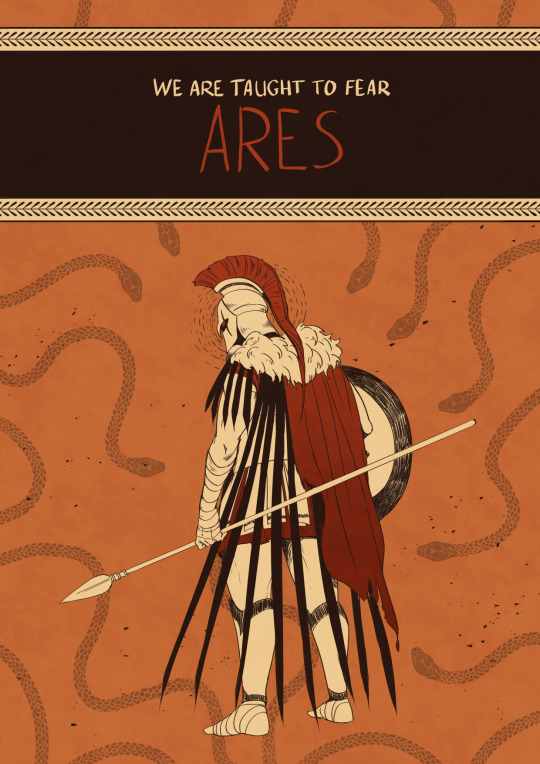
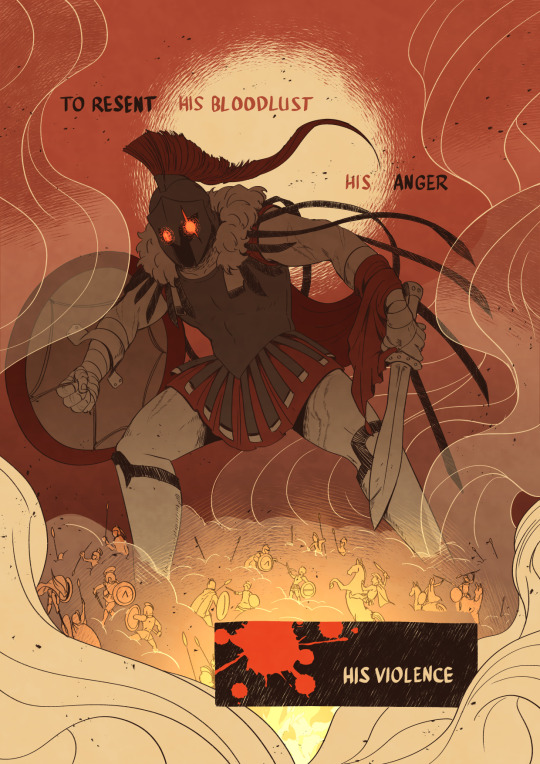
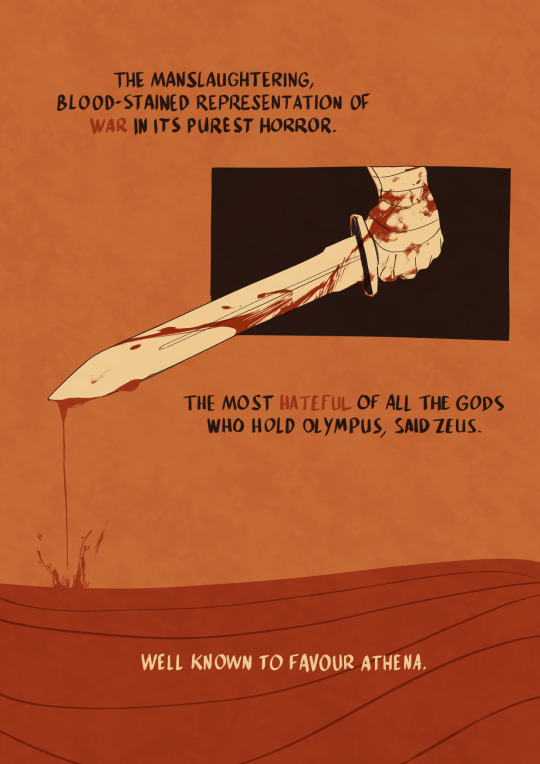
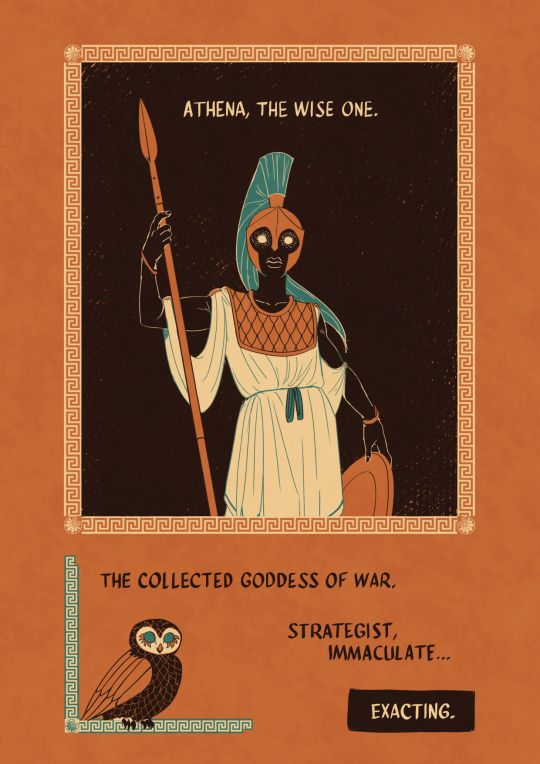
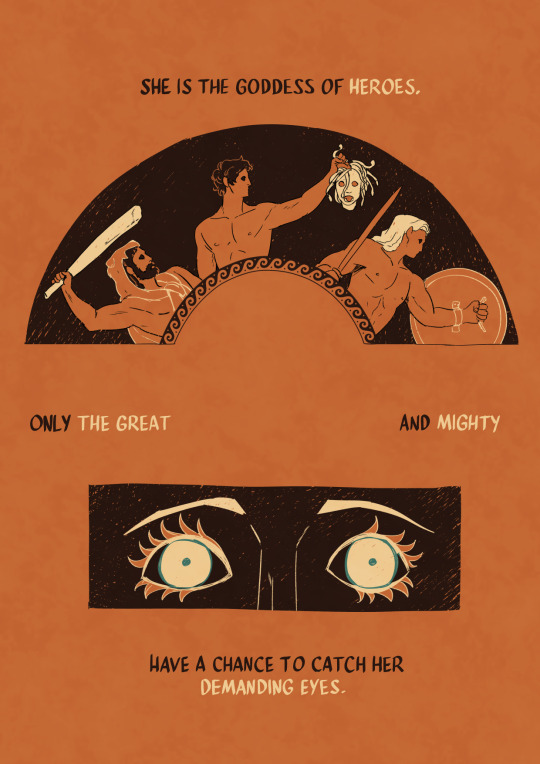
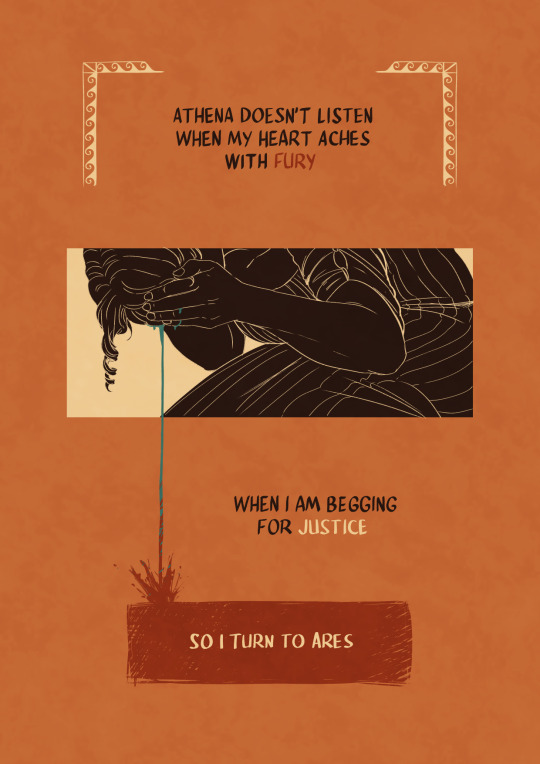
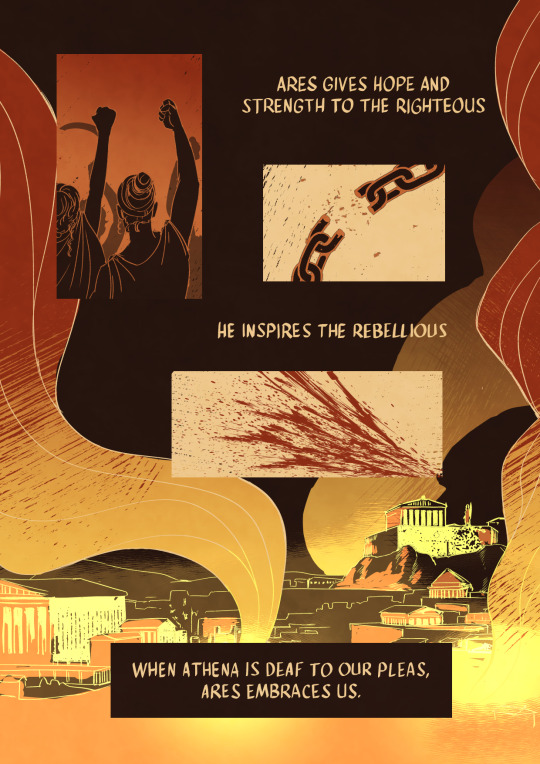
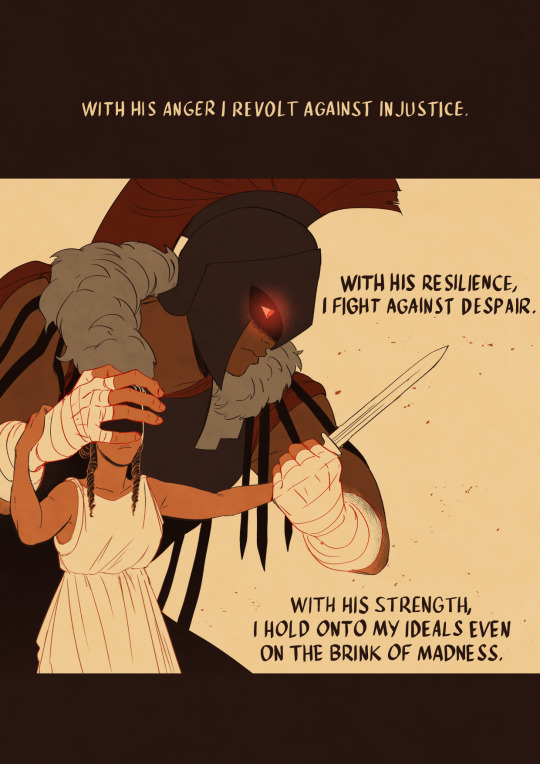
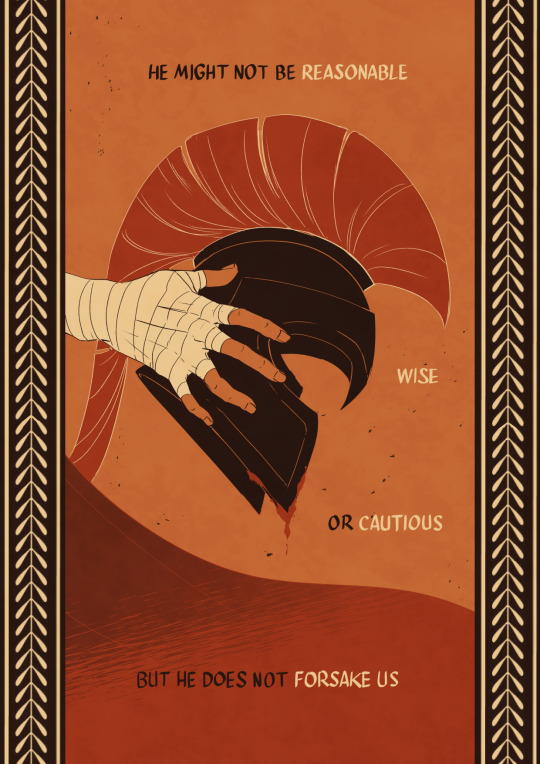
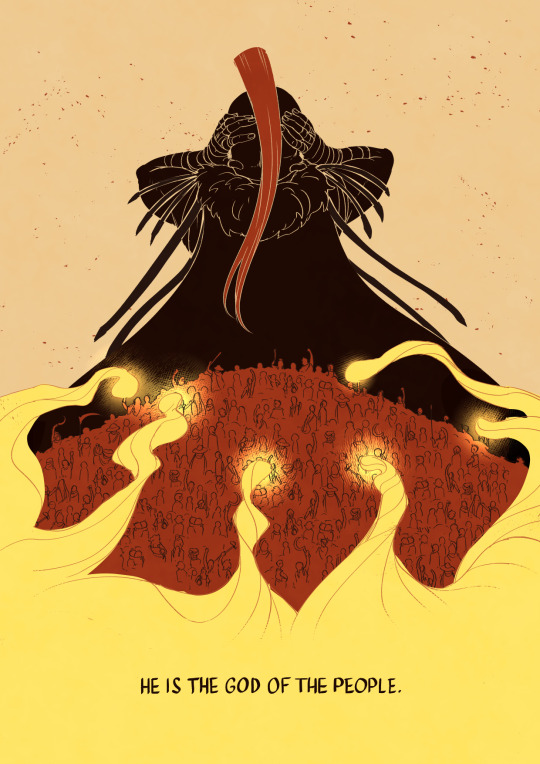
I turn to Ares.
Thanks to Tyler Miles Lockett who allowed me to draw inspiration from his ARES piece for page 2! Look at his etsy page it's SICK
⚔️ If you want to read some queer retelling of arturian legends have a look at my webtoon
#greek mythology#ares#athena#greek gods#dont get me wrong it aint athena slander but it sure is ares praise#on some level at least#man justly accused of bad things deserves some mid praise more at 11#thank you romi for helping me with words though i duly noted you insisted on ares not being cautious rather than him not being careful#romi be like “i want him to care” and honestly good you should say it#also EPIC led to this and i just..... i want to draw some animatics man i just need infinite time now#my long lost love for greek myths just will never stop coming and they dont stop coming and they dont stop coming#i want some vulture design in here for ares but not sure about this one#kochei doodles
96K notes
·
View notes
Text

i took out the other people sitting at the table in the original comic because i did NOT want to draw glindas gay ass friends
#wicked movie#wicked musical#wicked#galinda upland#elphaba thropp#wicked galinda#wicked elphaba#gelphie#galinda x elphaba#glinda#glinda x elphaba#glinda upland#im sorry guys her two friends annoy me so bad i will not stay silent anymore#BEFORE ANYONE YELLS AT ME this is a scene from the movie but w my stage designs#mainly bc i havent taken the time to come up w movie vers designs yet#but i might soon bc i love character design and drawing fun outfits#anyways i love lesbians
10K notes
·
View notes
Text
we've found it folks: mcmansion heaven
Hello everyone. It is my pleasure to bring you the greatest house I have ever seen. The house of a true visionary. A real ad-hocist. A genuine pioneer of fenestration. This house is in Alabama. It was built in 1980 and costs around $5 million. It is worth every penny. Perhaps more.
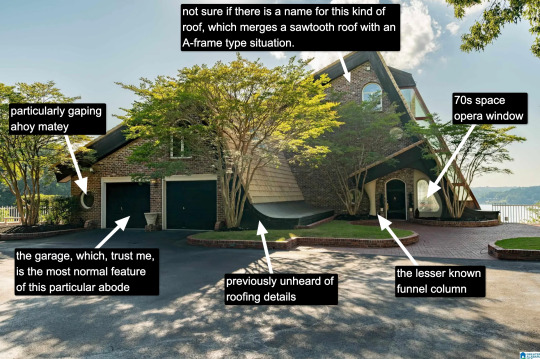
Now, I know what you're thinking: "Come on, Kate, that's a little kooky, but certainly it's not McMansion Heaven. This is very much a house in the earthly realm. Purgatory. McMansion Purgatory." Well, let me now play Beatrice to your Dante, young Pilgrim. Welcome. Welcome, welcome, welcome.
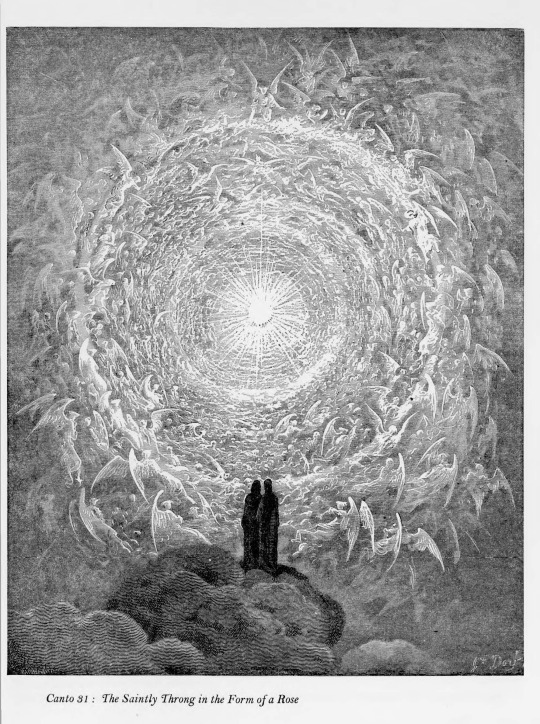
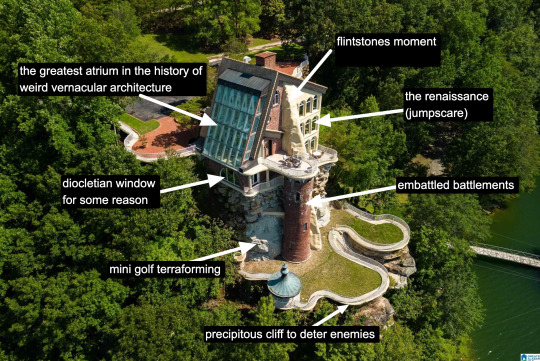
It is rare to find a house that has everything. A house that wills itself into Postmodernism yet remains unable to let go of the kookiest moments of the prior zeitgeist, the Bruce Goffs and Earthships, the commune houses built from car windshields, the seventies moments of psychedelic hippie fracture. It is everything. It has everything. It is theme park, it is High Tech. It is Renaissance (in the San Antonio Riverwalk sense of the word.) It is medieval. It is maybe the greatest pastiche to sucker itself to the side of a mountain, perilously overlooking a large body of water. Look at it. Just look.
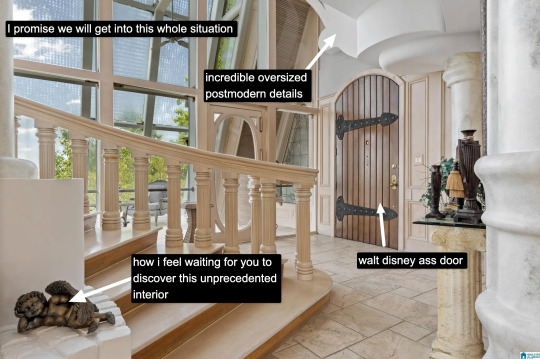
The inside is white. This makes it dreamlike, almost benevolent. It is bright because this is McMansion Heaven and Gray is for McMansion Hell. There is an overbearing sheen of 80s optimism. In this house, the credit default swap has not yet been invented, but could be.
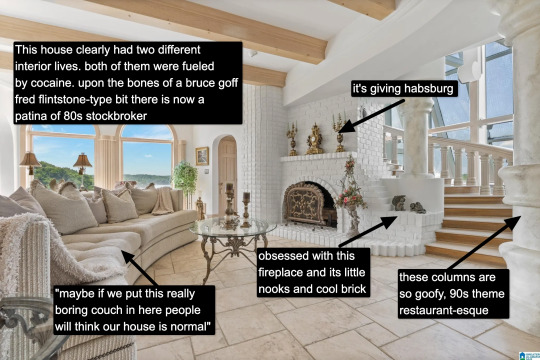
It takes a lot for me to drop the cocaine word because I think it's a cheap joke. But there's something about this example that makes it plausible, not in a derogatory way, but in a liberatory one, a sensuous one. Someone created this house to have a particular experience, a particular feeling. It possesses an element of true fantasy, the thematic. Its rooms are not meant to be one cohesive composition, but rather a series of scenes, of vastly different spatial moments, compressed, expanded, bright, close.
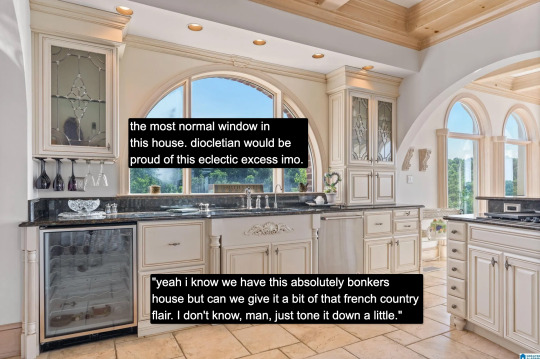
And then there's this kitchen for some reason. Or so you think. Everything the interior design tries to hide, namely how unceasingly peculiar the house is, it is not entirely able to because the choices made here remain decadent, indulgent, albeit in a more familiar way.

Rare is it to discover an interior wherein one truly must wear sunglasses. The environment created in service to transparency has to somewhat prevent the elements from penetrating too deep while retaining their desirable qualities. I don't think an architect designed this house. An architect would have had access to specifically engineered products for this purpose. Whoever built this house had certain access to architectural catalogues but not those used in the highest end or most structurally complex projects. The customization here lies in the assemblage of materials and in doing so stretches them to the height of their imaginative capacity. To borrow from Charles Jencks, ad-hoc is a perfect description. It is an architecture of availability and of adventure.
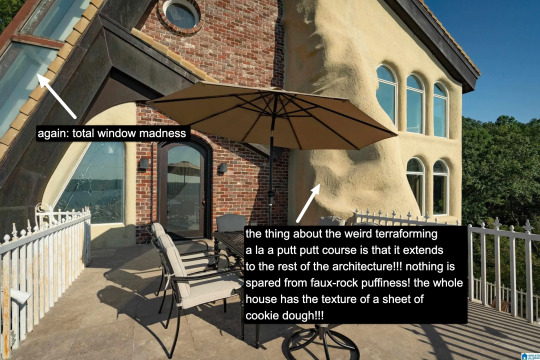
A small interlude. We are outside. There is no rear exterior view of this house because it would be impossible to get one from the scrawny lawn that lies at its depths. This space is intended to serve the same purpose, which is to look upon the house itself as much as gaze from the house to the world beyond.
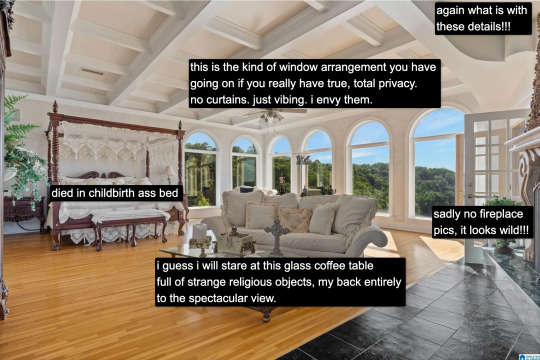
Living in a city, I often think about exhibitionism. Living in a city is inherently exhibitionist. A house is a permeable visible surface; it is entirely possible that someone will catch a glimpse of me they're not supposed to when I rush to the living room in only a t-shirt to turn out the light before bed. But this is a space that is only exhibitionist in the sense that it is an architecture of exposure, and yet this exposure would not be possible without the protection of the site, of the distance from every other pair of eyes. In this respect, a double freedom is secured. The window intimates the potential of seeing. But no one sees.
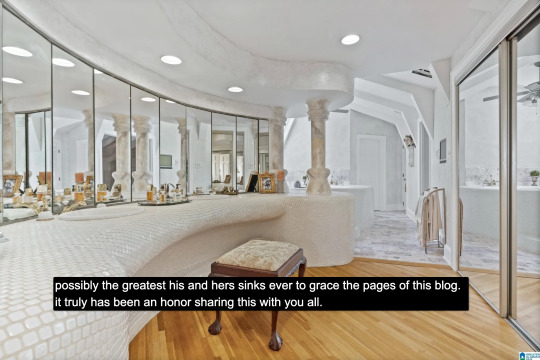
At the heart of this house lies a strange mix of concepts. Postmodern classicist columns of the Disney World set. The unpolished edge of the vernacular. There is also an organicist bent to the whole thing, something more Goff than Gaudí, and here we see some of the house's most organic forms, the monolith- or shell-like vanity mixed with the luminous artifice of mirrors and white. A backlit cave, primitive and performative at the same time, which is, in essence, the dialectic of the luxury bathroom.
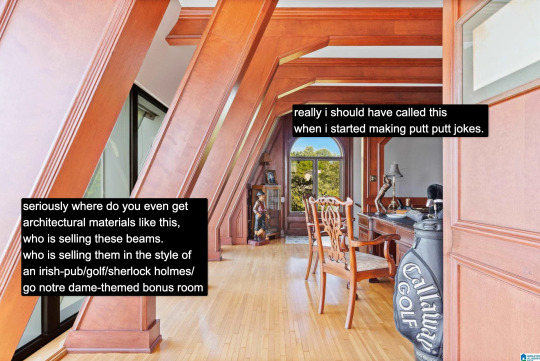
And yet our McMansion Heaven is still a McMansion. It is still an accumulation of deliberate signifiers of wealth, very much a construction with the secondary purpose of invoking envy, a palatial residence designed without much cohesion. The presence of golf, of wood, of masculine and patriarchal symbolism with an undercurrent of luxury drives that point home. The McMansion can aspire to an art form, but there are still many levels to ascend before one gets to where God's sitting.
If you like this post and want more like it, support McMansion Hell on Patreon for as little as $1/month for access to great bonus content including a discord server, extra posts, and livestreams.
Not into recurring payments? Try the tip jar! Student loans just started back up!
42K notes
·
View notes
Text
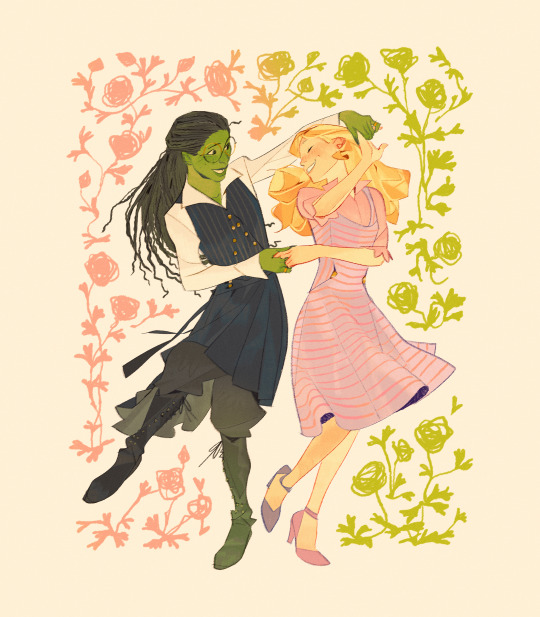


pink goes good (well) with green
#character design#character art#digital illustration#character designer#wicked#gelphie#glinda#elphaba#they deserve to be happy so bad#blue version and glassesless version attached#glinda would giggle as elphaba spins her#yes the flowers are pink ranunculi#aka the same flower that glinda puts in elphie's hair#also these were lowkey my favorite uniforms from them and i think they should have worn them more
9K notes
·
View notes
Text


trick or treat!
#my art#jjk#jujutsu kaisen#jjk fanart#jujutsu kaisen fanart#yuji itadori#fushiguro megumi#nobara kugisaki#maki zenin#yuta okkotsu#inumaki toge#jjk spoilers#jjk manga spoilers#u could argue that the spoilers r hidden by the costumes but idw take my chances#i havent posted art in a billion years i feel like a fraud and i am going to get a bad grade in tumblr dot com#so i am posting these early idc anymore#i still have probably one more halloween draws i plan on posting but im cracking i want these out of my drafts Now#these KILLED ME#i miss drawing fast i miss it so badddddd#dont get me wrong the costume design ws so fun i loved it but god did it take ages#but on the bright side. yuuji in a toga.#on another bright side. little devil nobara n cowgirl maki#on yet anotHER bright side. eldritch horror pandachu#these costumes eat if i do say so myself ghjsdfkgjf undead inuokko makes me so happy also they r so cute#not to mention megumi in his gay little hat god i made itfs so obnoxiously flirty in this#remember when i said the timeskip art ws the least heterosexual group photo i've ever drawn i take it back#theyre disgusting . save nobara episode 356325746732#anyway happy 10 days early halloween <3#i will try to not take a whole week to finish the last piece(s)
13K notes
·
View notes
Text

i keep seeing redesigns of them as humans so i decided to throw my hat into the ring
#ive seen that people get REALLY opinionated about this. so if you don't agree with me then just look for a different redesign#my little pony#mlp#mlp redesign#my little pony redesign#mlp humanized#mlp human designs#rarity#applejack#twilight sparkle#pinkie pie#fluttershy#rainbow dash#fanart#art#i also haven't watched the show in forever- so if something is characterized funny? then my bad
10K notes
·
View notes
Text
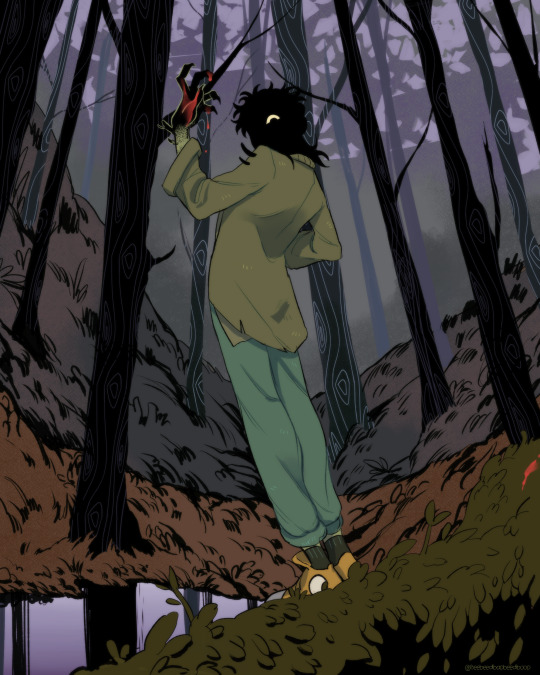
In the woods somewhere
#artists on tumblr#illustration#original#oc#the bad bad shadow guy#the postwoman#ink work#clip studio paint#character design#digital art
12K notes
·
View notes
Text
does anyone have like an anti aesthetic. like something you look at and can recognize as a complete fashion/interior design/artistic movement and understand it but it makes you shudder seeing it. i am not talking like “its morally bad” “its poorly structured” like just sheerly devoid of joy for you actually invites a repulse response.
#also if it wasnt clear this isnt ‘its bad its lazy’ there is a level of like#completion consistancy i am thinking for with this#personally i really do not enjoy the like. vintage chic long red nails fur coats noir esque aesthetic HOWEVER 💥💥💥#i can recognize that it is put together it is Intentional#i feel like a lot of people are going to say minimalism on this so LET ME SAY 🫰☝️ i recognize that minimalism is Considered an aesthetic#but i *PERSONALLY* do not consider it an aesthetic i consider it the void of one#it is a lapse in aesthetic or personality in the same way a silence in a song is still technically a ‘beat’ but no music is played#however the importance of Space or Breath in design is more akin to a purposeful silence in music#because that silence matters in the same way rhythm and breath in design do#so i guess minimalism is more comparable to like. white noise. the sound of a fan#very little effort and there is a comfort in it i suppose but its not. A Design. okay#TO ME 🤫#if minimalism has one hater its me if minimalism has no haters im dead
27K notes
·
View notes
Text

Jr year baby!
#I adore the official designs so much so these are based off of them but I did take some liberties with the clothing lol#dimension 20#d20#fantasy high#d20 fantasy high#fanart#digital art#my artwork#fantasy high fanart#fantasy high junior year#gorgug thistlespring#fig faeth#adine abernant#the bad kids#I’m not gonna tag everything because there’s so many guys#fantasy high spoilers#fhjy spoilers
9K notes
·
View notes
Text


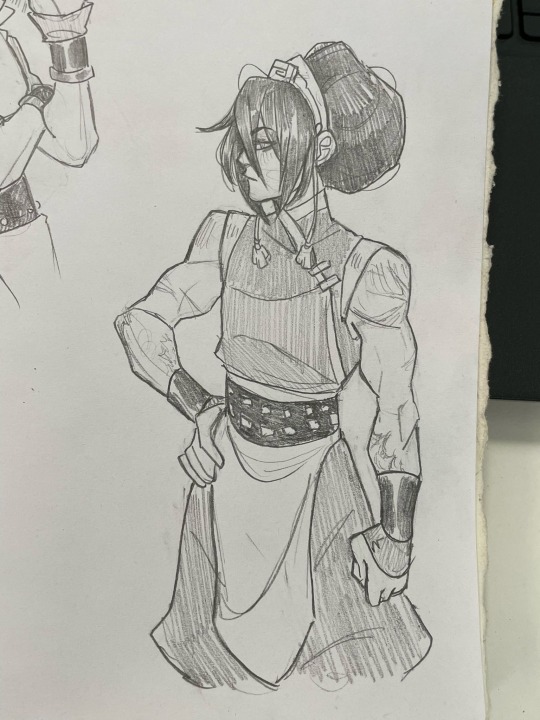
can you guess who’s in my top 3 best female characters of all time
#my mom loves toph a LOT#and i agree with her so bad#i need to draw her with her hair down#last one is another headcanon of my older design for herr#atla#avatar the last airbender#toph#toph beifong#art#my art#fanart
9K notes
·
View notes
Text



not as much memory loss timeline fiddleford you're so cool
#i am having a good time with this#to be specific he was still addicted to using the memory gun but quit before it got really bad#now he's helping stan rebuild the portal#because gay or something#gravity falls#gravity falls au#fiddleford mcgucket#fiddleford hadron mcgucket#stan pines#stanley pines#tate mcgucket#myart#character design#grunkle fidds
7K notes
·
View notes
Text
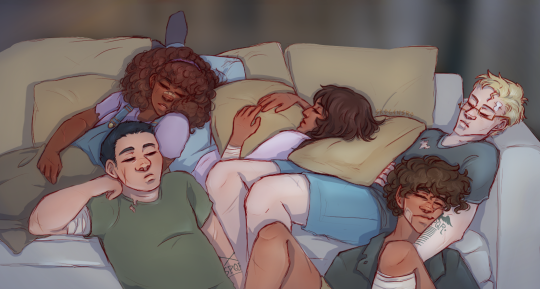
accidental post-war movie night sleepover
#and then nothing bad happened to any of them ever again <3#fr though i WAS gonna add percy and annabeth but i didnt have rooM#plus havent settled on my designs for them (i rly wanna figure out show-inspired designs!!)#so just pretend theyre the ones Discovering this scene#bc this is definitely sally & paul's couch <333#hazel levesque#frank zhang#piper mclean#leo valdez#jason grace#percy jackson#heroes of olympus#pjo#hoo#camp half blood#percy jackson and the olympians
5K notes
·
View notes
Text







My interpretation on how human bill came to be, ig? (ALSO SORRY, I MEANT DD&MD.. or idk how to abbreviate it)
#sorry for cursing your eyes with both bill designs#can you tell i was struggling between using the shows style and my own? YEAH. trust me it was worse#gravity falls bill#gravity falls book#gravity falls fanart#gravity falls ford#gravity falls#bill ci the demon guy#the book of bill#billford#bill ci the triangle guy#bill cipher#gravity falls dipper#dipper pines#grunkle ford#bill x ford#ford pines#gravity falls stanford#bill x stanford#gravity falls comic#SORRY IF YOU CANT READ BILLS TEXT. AGAIN. MY BAD...#gravity falls headcanons#human bill cipher#human bill design
5K notes
·
View notes
Text
on neuschwanstein castle (part 1)
This is an essay in two parts.

Neuschwanstein Concept Drawing by the stage designer (!!) Christian Jank (1869).
There exist in architecture clear precedents to the McMansion that have nothing to do with suburban real estate. This is because “McMansionry” (let’s say) has many transferable properties. Among them can be included: 1) a diabolical amount of wealth that must be communicated architecturally in the most frivolous way possible, 2) a penchant for historical LARPing primarily informed by media (e.g. the American “Tuscan kitchen”) and 3) the execution of historical styles using contemporary building materials resulting in an aesthetic affect that can be described as uncanny or cheap-looking. By these metrics, we can absolutely call Neuschwanstein Castle, built by the architect Eduard Riedel for King Ludwig II of Bavaria, a McMansion.
Constructed from 1869 through 1886 – the year of Ludwig’s alleged suicide after having been ousted and declared insane – the castle cost the coffers of the Bavarian state and Ludwig himself no fewer than 6.2 million German gold marks. (That's an estimated 47 million euros today.) The castle's story is rife with well-known scandal. I'm sure any passing Swan Enthusiast is already familiar with Ludwig’s financial capriciousness, his called-off marriage and repressed homosexuality, his parasocial obsession with Richard Wagner, his complete and total inability to run his country, and his alleged "madness," as they used to call it. All of these combine to make Neuschwanstein inescapable from the man who commissioned it -- and the artist who inspired it. Say what you like about Ludwig and his building projects, but he is definitely remembered because of them, which is what most monarchs want. Be careful what you wish for.

Neuschwanstein gatehouse.
How should one describe Neuschwanstein architecturally? You’d need an additional blog. Its interiors alone (the subject of the next essay) range from Neo-Baroque to Neo-Byzantine to Neo-Gothic. There are many terms that can loosely define the palace's overall style: eclecticism, medieval revivalism, historicism, chateauesque, sclerotic monarchycore, etc. However, the the most specific would be what was called "castle Romanticism" (Burgenromantik). The Germans are nothing if not literal. Whatever word you want to use, Neuschwanstein is such a Sistine Chapel of pure sentimentality and sugary kitsch that theme park architecture – most famously, Disney's Cinderella’s castle itself – owes many of its medieval iterations to the palace's towering silhouette.
There is some truth to the term Burgenromantik. Neuschwanstein's exterior is a completely fabricated 19th century storybook fantasy of the Middle Ages whose precedents lie more truthfully in art for the stage. As a castle without fortification and a palace with no space for governance, Neuschwanstein's own program is indecisive about what it should be, which makes it a pretty good reflection of Ludwig II himself. To me, however, it is the last gasp of a monarchy whose power will be totally extinguished by that same industrial modernity responsible for the materials and techniques of Neuschwanstein's own, ironic construction.
In order to understand Neuschwanstein, however, we must go into two subjects that are equally a great time for me: 19th century medievalism - the subject of this essay - and the opera Lohengrin by Richard Wagner, the subject of the next. (1)
Part I: Medievalisms Progressive and Reactionary

The Middle Ages were inescapable in 19th century Europe. Design, music, visual art, theater, literature, and yes, architecture were all besotted with the stuff of knights and castles, old sagas, and courtly literature. From arch-conservative nationalism to pro-labor socialism, medievalism's popularity spanned the entire political spectrum. This is because it owes its existence to a number of developments that affected the whole of society.
In Ludwig’s time, the world was changing in profound, almost inconceivable ways. The first and second industrial revolutions with their socioeconomic upheavals and new technologies of transport, manufacturing, and mass communication, all completely unmade and remade how people lived and worked. This was as true of the average person as it was of the princes and nobles who were beginning to be undermined by something called “the petit bourgeoisie.”
Sustenance farming dwindled and wage labor eclipsed all other forms of working. Millions of people no longer able to make a living on piecemeal and agricultural work flocked to the cities and into the great Molochs of factories, mills, stockyards, and mines. Families and other kinship bonds were eroded or severed by the acceleration of capitalist production, large wars, and new means of transportation, especially the railroad. People became not only alienated from each other and from their labor in the classical Marxist sense but also from the results of that labor, too. No longer were chairs made by craftsmen or clothes by the single tailor -- unless you could afford the bespoke. Everything from shirtwaists to wrought iron lamps was increasingly mass produced - under wretched conditions, too. Things – including buildings – that were once built to last a lifetime became cheap, disposable, and subject to the whimsy of fashion, sold via this new thing called “the catalog.”

William Morris' painting Le Belle Iseult (1868).
Unsurprisingly, this new way of living and working caused not a little discontent. This was the climate in which Karl Marx wrote Capital and Charles Dickens wrote A Christmas Carol. More specific to our interests, however, is a different dissenter and one of the most interesting practitioners of medievalism, the English polymath William Morris.
A lover of Arthurian legend and an admirer of the architect and design reformer John Ruskin, Morris was first trained in the office of architect G. E. Street, himself a die-hard Gothic Revivalist. From the very beginning, the Middle Ages can be found everywhere in Morris' work, from the rough-hewn qualities of the furniture he helped design to the floral elements and compositions of the art nouveau textiles and graphics he's most famous for -- which, it should be said, are reminiscent of 15th century English tapestries. In addition to his design endeavors, Morris was also a gifted writer and poet. His was a profound love for medieval literature, especially Norse sagas from Iceland. Some of these he even translated including the Volsunga Saga -- also a preoccupation of Wagner's. Few among us earn the title of polymath, but Morris' claim to it is undeniable. Aside from music, there really wasn't any area of creative life he didn't touch.
However, Morris' predilection for the medieval was not just a personal and aesthetic fascination. It was also an expression of his political rejection of the capitalist mode of production. As one of the founders of the English Arts & Crafts Movement, Morris called for a rejection of piecemeal machine labor, a return to handicraft, and overall to things made well and made with dignity. While this was and remains a largely middle class argument, one that usually leads down the road of ethical consumption, Morris was right that capitalism's failing of design and architecture did not just lie with the depreciated quality of goods, but the depreciated quality of life. His was the utopian call to respect both the object and the laborer who produced it. To quote from his 1888 essay called "The Revival of Architecture," Morris dreamed of a society that "will produce to live and not live to produce, as we do." Indeed, in our current era of AI Slop, there remains much to like about the Factory Slop-era call to take back time from the foreman's clock and once more make labor an act of enjoyable and unalienated creativity. Only now it's about things like writing an essay.
I bother to describe Morris at length here for a number of reasons. The first is to reiterate that medievalism's popularity was largely a response to socioeconomic changes. Additionally, since traditionalism - in Ludwig's time and in ours - still gets weaponized by right-wing losers, it's worth pointing out that not all practitioners of medievalism were politically reactionary in nature. However – and I will return to this later – medievalism, reactionary or not, remains inescapably nostalgic. Morris is no exception. While a total rejection of mass produced goods may seem quixotic to us now, when Morris was working, the era before mass industrialization remained at the fringes of living memory. Hence the nostalgia is perhaps to be expected. Unfortunately for him and for us, the only way out of capitalism is through it.
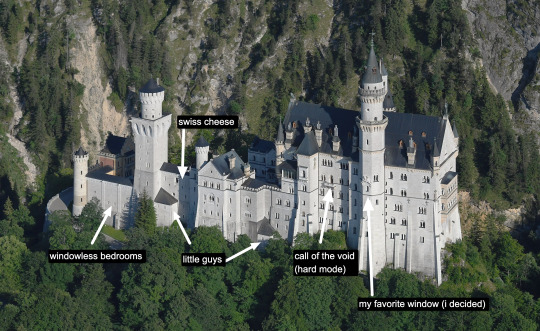
To return again to the big picture: whether one liked it or not, the old feudal world was done. Only its necrotic leftovers, namely a hereditary nobility whose power would run out of road in WWI, remained. For Ludwig purposes, it was a fraught political time in Bavaria as well. Bavaria, weird duck that it was, remained relatively autonomous within the new German Reich. Despite the title of king, Ludwig, much to his chagrin - hence the pathetic Middle Ages fantasizing - did not rule absolutely. His was a constitutional monarchy, and an embattled one at that. During the building of Neuschwanstein, the king found himself wedged between the Franco-Prussian War and the political coup masterminded by Otto von Bismarck that would put Europe on the fast track to a global conflict many saw as the atavistic culmination of all that already violent modernity. No wonder he wanted to hide with his Schwans up in the hills of Schwangau.
The very notion of a unified German Reich (or an independent Kingdom of Bavaria) was itself indicative of another development. Regardless if one was liberal or conservative, a king, an artist or a shoe peddler, the 19th century was plagued by the rise of modern nationalism. Bolstered by new ideas in "medical" “science,” this was also a racialized nationalism. A lot of emotional, political, and artistic investment was put into the idea that there existed a fundamentally German volk, a German soil, a German soul. This, however, was a universalizing statement in need of a citation, with lots of political power on the line. Hence, in order to add historical credence to these new conceptions of one’s heritage, people turned to the old sources.
Within the hallowed halls of Europe's universities, newly minted historians and philologists scoured medieval texts for traces of a people united by a common geography and ethnicity as well as the foundations for a historically continuous state. We now know that this is a problematic and incorrect way of looking at the medieval world, a world that was so very different from our own. A great deal of subsequent medieval scholarship still devotes itself to correcting for these errors. But back then, such scholarly ethics were not to be found and people did what they liked with the sources. A lot of assumptions were made in order to make whatever point one wanted, often about one's superiority over another. Hell, anyone who's been on Trad Guy Deus Vult Twitter knows that a lot of assumptions are still made, and for the same purposes.(2)
Meanwhile, outside of the academy, mass print media meant more people were exposed to medieval content than ever before. Translations of chivalric romances such as Wolfgang von Eschenbach’s Parzival and sagas like the Poetic Edda inspired a century’s worth of artists to incorporate these characters and themes into their work. This work was often but of course not always nationalistic in character. Such adaptations for political purposes could get very granular in nature. We all like to point to the greats like William Morris or Richard Wagner (who was really a master of a larger syncretism.) But there were many lesser attempts made by weaker artists that today have an unfortunate bootlicking je nais se quoi to them.
I love a minor tangent related to my interests, so here's one: a good example of this nationalist granularity comes from Franz Grillparzer’s 1823 pro-Hapsburg play König Ottokars Glück und Ende, which took for its source a deep cut 14th century manuscript called the Styrian Rhyming Chronicle, written by Ottokar Aus Der Gaul. The play concerns the political intrigue around King Ottokar II of Bohemia and his subsequent 1278 defeat at the hands of Grillparzer’s very swagged out Rudolf of Habsburg. Present are some truly fascinating but extremely obscure characters from 13th Holy Roman Empire lore including a long-time personal obsession of mine, the Styrian ministerial and three-time traitor of the Great Interregnum, Frederick V of Pettau. But I’m getting off-topic here. Let's get back to the castle.

The Throne Room at Neuschwanstein
For architecture, perhaps the most important development in spreading medievalism was this new institution called the "big public museum." Through a professionalizing field of archaeology and the sickness that was colonialist expansion, bits and bobs of buildings were stolen from places like North Africa, Egypt, the Middle East, and Byzantium, all of which had an enormous impact on latter 19th century architecture. (They were also picked up by early 20th century American architects from H. H. Richardson to Louis Sullivan.) These orientalized fragments were further disseminated through new books, monographs, and later photography.
Meanwhile, developments in fabrication (standardized building materials), construction (namely iron, then steel) and mass production sped things up and reduced costs considerably. Soon, castles and churches in the image of those that once took decades if not a century to build were erected on countless hillsides or in little town squares across the continent. These changes in the material production of architecture are key for understanding "why Neuschwanstein castle looks so weird."

Part of what gives medieval architecture its character is the sheer embodiment of labor embedded in all those heavy stones, stones that were chiseled, hauled, and set by hand. The Gothic cathedral was a precarious endeavor whose appearance of lightness was not earned easily, which is why, when writing about their sublimity, Edmund Burke invoked not only the play of light and shadow, but the sheer slowness and human toil involved.
This is, of course, not true of our present estate. Neuschwanstein not only eschews the role of a castle as a “fortress to be used in war” (an inherently stereotomic program) but was erected using contemporary materials and techniques that are simply not imbued with the same age or gravitas. Built via a typical brick construction but clad in more impressive sandstone, it's all far too clean. Neuschwanstein's proportions seem not only chaotic - towers and windows are strewn about seemingly on a whim - they are also totally irreconcilable with the castle's alleged typology, in part because we know what a genuine medieval castle looks like.
Ludwig's palace was a technological marvel of the industrial revolution. Not only did Neuschwanstein have indoor plumbing and central heat, it also used the largest glass windows then in manufacture. It's not even an Iron Age building. The throne room, seen earlier in this post, required the use of structural steel. None of this is to say that 19th century construction labor was easy. It wasn't and many people still died, including 30 at Neuschwanstein. It was, however, simply different in character than medieval labor. For all the waxing poetic about handiwork, I’m sure medieval stonemasons would have loved the use of a steam crane.
It's true that architectural eclecticism (the use of many styles at once) has a knack for undermining the presumed authenticity or fidelity of each style employed. But this somewhat misunderstands the crime. The thing about Neuschwanstein is that its goal was not to be historically authentic at all. Its target realm was that of fantasy. Not only that, a fantasy informed primarily by a contemporary media source. In this, it could be said to be more architecturally successful.

The fantasy of medievalism is very different than the truth of the Middle Ages. As I hinted at before, more than anything else, medievalism was an inherently nostalgic movement, and not only because it was a bedrock of so much children's literature. People loved it because it promised a bygone past that never existed. The visual and written languages of feudalism, despite it being a terrible socioeconomic system, came into vogue in part because it wasn't capitalism. We must remember that the 19th century saw industrial capitalism at its newest and rawest. Unregulated, it destroyed every natural resource in sight and subjected people, including children, to horrific labor conditions. It still does, and will probably get worse, but the difference is, we're somewhat used to it by now. The shock's worn off.
All that upheaval I talked about earlier made people long for a simplicity they felt was missing. This took many different forms. The rapid advances of secular society and the incursion of science into belief made many crave a greater religiosity. At a time when the effects of wage labor on the family had made womanhood a contested territory, many appeals were made to a divine and innocent feminine a la Lady Guinevere. Urbanization made many wish for a quieter world with less hustle and bustle and better air. These sentiments are not without their reasons. Technological and socioeconomic changes still make us feel alienated and destabilized, hence why there are so many medieval revivals even in our own time. (Chappell Roan of Arc anyone?) Hell, our own rich people aren't so different from Ludwig either. Mark Zuckerburg owns a Hawaiian island and basically controls the fates of the people who live there lord-in-the-castle-style.

Given all this, it's not surprising that of the products of the Middle Ages, perhaps chivalric romance was and remains the most popular. While never a real depiction of medieval life (no, all those knights were not dying on the behalf of pretty ladies), such stories of good men and women and their grand adventures still capture the imaginations of children and adults alike. (You will find no greater fan of Parzival than yours truly.) It's also no wonder the nature of the romance, with its paternalistic patriarchy, its Christianity, its sentimentality around courtly love, and most of all its depiction of the ruling class as noble and benevolent – appealed to someone like Ludwig, both as a quirked-up individual and a member of his class.
It follows, then, that any artist capable of synthesizing all these elements, fears, and desires into an aesthetically transcendent package would've had a great effect on such a man. One did, of course. His name was Richard Wagner.
In our next essay, we will witness one of the most astonishing cases of kitsch imitating art. But before there could be Neuschwanstein Castle, there had to be this pretty little opera called Lohengrin.
---
(1) If you want to get a head start on the Wagner stuff, I've been writing about the Ring cycle lately on my Substack: https://www.late-review.com/p/essays-on-wagners-ring-part-1-believing
(2) My favorite insane nationalist claim comes from the 1960s, when the Slovene-American historian Joseph Felicijan claimed that the US's democracy was based off the 13th century ritual of enthronement practiced by the Dukes of Carinthia because Thomas Jefferson owned a copy of Jean Bodin's Les six livres de la Republique (1576) in which the rite was mentioned. For more information, see Peter Štih's book The Middle Ages Between the Alps and the Northern Adriatic (p. 56 for the curious.)
If you like this post and want more like it, support McMansion Hell on Patreon for as little as $1/month for access to great bonus content including a discord server, extra posts, and livestreams.
Not into recurring payments? Try the tip jar! Student loans just started back up!
#architecture#design#mcmansion#mcmansions#bad architecture#neuschwanstein#wagner#essay#medievalism#19th century
4K notes
·
View notes
Text




Sketching while streaming s5...
Jonathan Sims I will learn to draw you (this is my doing. I could draw him however I want and I choose to stick with an image of him in my brain that is difficult for me to draw. Masochism.)
Not s5 Mahtins below I enjoyed drawing cuz hes neat:

(Edit: I yassified Martin in the do not separate cuz I wanted his hair fluffier)
#yes I realize Jon and Martin are in different fucking art styles let me live#do not accuse me of being AI this difficulty drawing hands is all natural I worked hard drawing for years just to fucking suck at it#update I listened to 170 I heard it was devastating but my ass was LAUGHING#poor martin but omg me and my buddy had everywhere at the end of time in the background and shit was so funny#he forgor 😭💀#it was emotionally devastating at the end tho Jon suggesting he stay there um btich NO?!#Jon the literal Lonely is not worse tham being around you get a fucking grip#helen continues to be the best character her showing up for the juicy gossip is so fucking real#anyagays#tma#tma podcast#the magnus pod#tma fanart#jonathan sims#the magnus archives#my art#martin blackwood#jonmartin#jmart#tma jmart#tma season 5#tma spoilers#i have to make a diagram for my jon and martin designs for s5 SO bad#if only i could draw jon.... >:(#i need u guys to know that my martin loves plaid and jon is wearing a plaid shirt thats too big in s5... inchresting....
4K notes
·
View notes
Text

Finished my werewolf sketch-dump on Halloween, just getting around to posting. Point was to loosen up a bit and also push the body horror aspect. Kinda got a little addicted to the fur though. Didn't quite reach what I was aiming for so I may revisit this.
Shout out to @nataliehall, I did draw inspiration from your work. Just to say this is a sketch dump, I'm trying to push my limits in terms of design.
#my art#werewolf#werewolves#character design#creature design#bad moon rising#wolfies#monster#monster design
19K notes
·
View notes